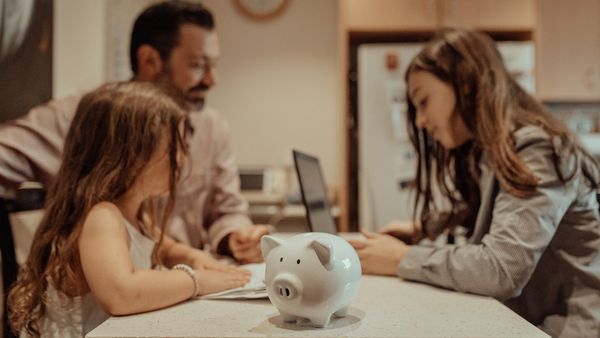Invisible money: how to teach our kids the value of cash when they can't see it
By Jo Abi | Presented by Bendigo Bank|

When my children were little, I bought them piggy banks to teach them to save money. They would be so excited to put coins in them, and never showed any interest in cracking them open and spending their savings.
Fast-forward 10 years and there are no more piggy banks in our home, nor coins to put in them.
Cash has disappeared from our lives, aside from the odd "gold coin donation" days their schools announce twice a year.
For the most part my children deal with virtual money, and always have done. Even when they were younger with piggy banks, they would play games on devices that required them to "earn" coins. They would ask if I could purchase coins for them using my credit card.
I always worried about doing that, not because I would miss the $6.99 they spent a handful of times, but because they wouldn't see me actually paying $6.99. The purchase amount was magically taken off my "money card" as they would call it.
Now that they are teenagers, they will ask to use my card for purchases or trips to the shops, or to tap my phone.
It's a struggle to teach children the value of money in a world where the use of actual cash is dwindling fast, but it isn't impossible.
Here's how I ensure my children understand the value of money in our increasingly cashless world.
1. Budget and banking apps
We recently organised for them to have their own debit credit cards onto which we place a weekly allowance and any money they receive as gifts. There are also prepaid debit cards for younger children so they can get used to paying for purchases simply by tapping their cards.
These cards used in conjunction with a budget or banking app can be useful when it comes to teaching kids about money, because they will be able to see how much they have to spend, what they've spent it on and what they need to save for any larger, planned purchases.
Using an app can feel like a fun game, and oftentimes these can be linked to family members for shared goals.
2. Make them earn it
Children need to learn that money is earned. Decide on a set weekly allowance and explain the jobs they are expected to complete to earn that cash.
It can help to have a variety of chores they can choose from each week.
Basic cleaning isn't included on the list, including keeping their rooms tidy and cleaning their own messes in shared spaces. Think rather of vacuuming, feeding and walking pets, and chores outside of what is expected.
3. Discuss the cost of everyday expenses

Sharing the cost of everyday expenses with your children is an excellent way to teach them about the value of money. This can be done in a positive, empowering way.
Explain there is a set amount of money that can be spent on food, activities and subscriptions, and include them in making choices.
Anything that doesn't fit into the budget can wait for the next pay cycle.
4. Give them a fixed amount and don't give them any extra
Children need to understand the consequences of overspending. If they spend their weekly allowance in a day, they must wait for the following week for more money.
It's a hard lesson, but one that is important to their financial futures.
"When it's discretionary, there are lessons to be learned," explains Bendigo Bank state manager Gavin Holden. "A little bit of freedom goes a long way."
Bendigo Bank wants to help you plan and save to build a better future for you and your family. Get more information at the Bendigo Bank website.
Any advice provided in this article is of a general nature only and does not take into account your personal needs, objectives and financial circumstances. You should consider whether it is appropriate for your situation. Please read the applicable product disclosure statement(s) on our website before acquiring any product.



